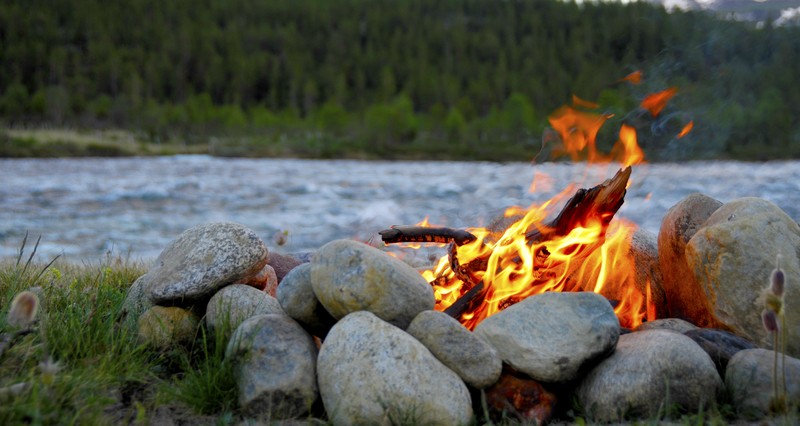A reliable fire affects just about everything you do and are capable of doing in a survival situation. Without it and you're pretty much a goner. Of course, shelter is of the utmost importance, but so is keeping warm!
Here are several methods of setting your fire up for success!
Tipi
The simplest and most effective way to start any kind of fire. You’ll use a tipi made from kindling to start most of the rest of these styles. We’re over-simplifying with large pieces of wood here to make it easy to follow. If you want to use a tipi to get a fire going, build one with the smallest, driest, most exposed pieces of wood possible. Then, either put your tinder in its center and light it or light it first, then scoot it in. Don’t forget to leave a “door” through which to do that!
The basic idea is to create a structure that concentrates the flame while allowing plenty of air to enter. Start with enough wood on your tipi to get going, then just add more slowly as the fire builds. Start small and work up to larger pieces as appropriate; you’ll develop a feel for when and how large with practice.
Sticking a forked branch in the ground as a center pole for your tipi makes building one easier. And you can scale a tipi all the way from the very first pile of kindling on up to a massive bonfire. You can even build the entire thing before lighting, just remember that door and remember the necessary progression of wood sizes as you work outwards and upwards.Log Cabin
Want a fire that requires very little maintenance? Building a log cabin creates a structure that will progressively burn for a long time, while lighting quickly and easily from a tipi or other kindling structure built inside it. These are great for getting bonfires going quickly or just building a campfire you can then ignore while you prep food or perform other chores. Use the thickest logs for the base, then go a bit smaller as you work up. You can also reduce the circumference into sort of a pyramid for something that will catch a bit quicker.
Platform
Want a nice bed of coals to cook on? You build a pyramid like a solid log cabin, with the largest logs at the base and something about the size of your wrist on the top. Then, you just light a fire on the top and let it burn down through the logs, creating a big, thick bed of hot coals. And you don’t need to wait for it to burn down all the way to start cooking. If you have cast iron cookware, you can place that directly on the hot coals as soon as that first layer of logs is burning solidly.
Using more and bigger logs, this style is also known as the “upside down” fire, popular for its ability to burn for a long time, untended. Again, put the biggest logs on the bottom and scale up to smaller stuff, then light a fire on the top. With practice, you’ll figure out the right size wood to use to create a fire capable of burning on its own, all night.
These can be a little difficult to get going. The trick is to build a large enough tipi on top to create a bed of coals that will be capable of burning down through the first layer, igniting that, creating a larger bed of coals and so on.
Fire is not the most important item on your “musts” as it pertains to survival; in all but the most extreme cold, you can survive without a fire and even then, if you have shelter and are dressed properly, you can still survive.
Fire makes survival much more pleasant, however, and in some cases, it can save your life if you know how to build it properly.
To read up on more ways to set up a virtually fail-safe fire, check out Indefinitely Wild.
